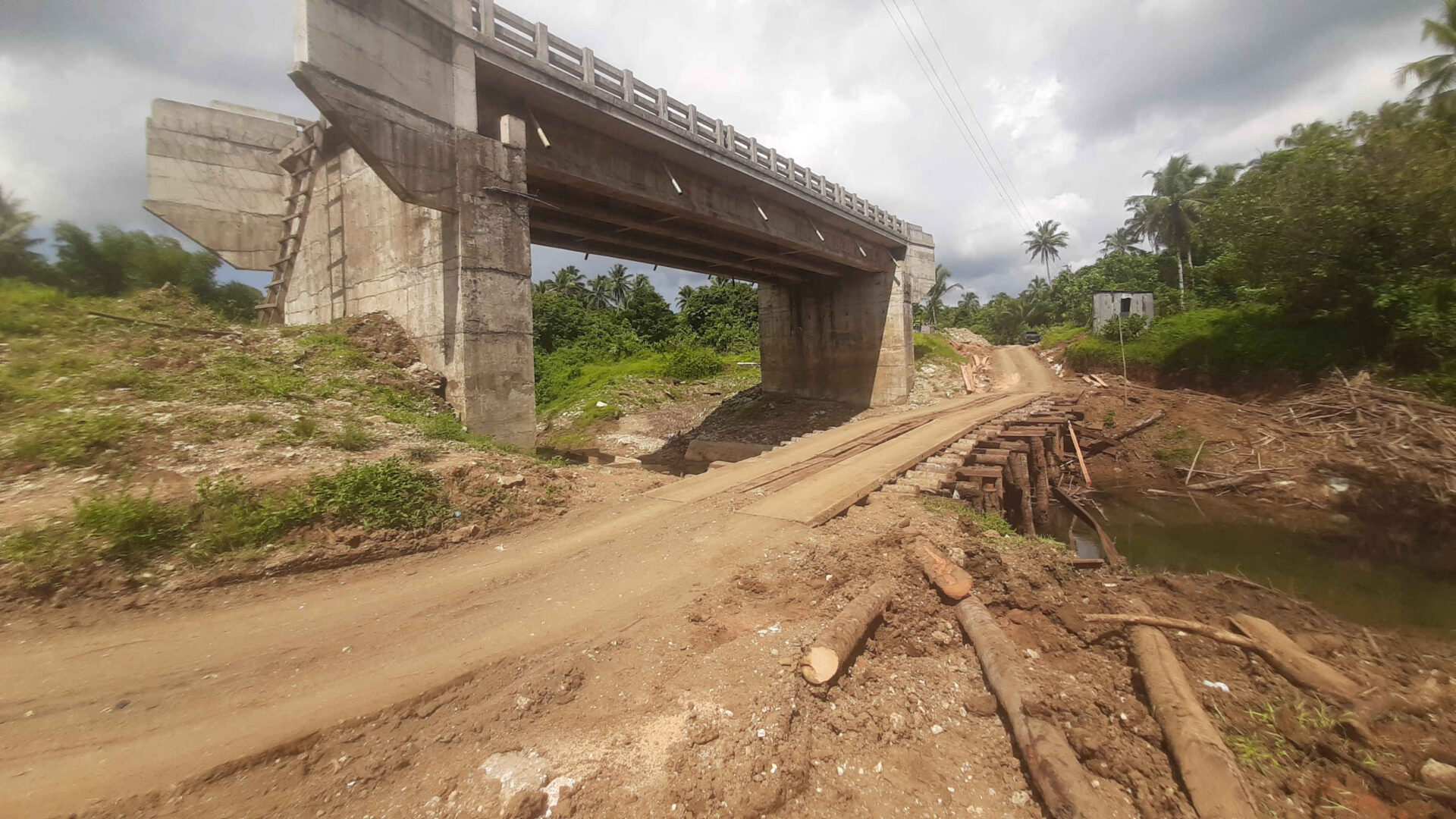MASLOG, Eastern Samar — Alberto Nuguit listens intently as politicians talk on stage about the road project that will connect this town to the adjacent municipality of Jipapad.
“They look sincere but I hope this time there will really be a functional road,” he whispers. “We had been promised many times over in the past but, look, we remain isolated from our neighboring towns.”
Nuguit, 49, is the barangay chairman of Tugas, a farming village nestled between Maslog and Jipapad towns which happen to be the two most economically depressed municipalities of Eastern Samar.
From his village to the town proper, the most viable means of transportation is the kuliglig, which is pulled by a tractor where the fare is P50 per head for the five-kilometer ride.
“It is difficult and expensive to bring our crops to the market,” adds Federico Bergonio, the barangay chairman of San Roque, the next village which is three kilometers farther from the town center. “We pay P100 per sack to bring our crops to Tugas where transportation to the town is available.”
Maslog, a fifth-class municipality with a population of 5,463 in the 2020 Census, has oftentimes been referred to, albeit in jest, as Samar island’s last town — always the last to receive services from the national government and the last to be connected to a national road.
In going to Maslog, the easiest access is through a four-hour ride on a samban, a motorized banca without outriggers, from Dolores town traversing the Dolores river. There is an unfinished road that was started over 15 years ago from Carolina junction in Dolores to Maslog but its sorry state makes the 34-km stretch a bumpy two-hour drive.
Despite its distance and relatively small voting population — 3,535 registered voters in the 2022 local and national elections — Maslog has been on the radar of politicians who capitalize on a pro-poor agenda. Maslog has been visited by at least two previous presidential aspirants, Joseph Estrada in 1998 and Leni Robredo in 2022.
“If only the bridges to Dolores were completed, we could bring our emergency patients to the hospital despite the bad road even during rainy days,” says Nuguit.
Nuguit is referring to Hinolaso Bridge 1, Hinolaso Bridge 2, Hinolaso Bridge 3, and Villahermosa Bridge that were constructed at a total project cost of P212.48 million. The bridges cannot be used, however, because there are no approaches to them, leaving the bridges hanging in the air. The bridges are also too high as they were designed based on the highest flood that occurred in the last 25 years.
The bridge projects had two phases: the construction of substructures amounting to P97.83 million and the construction of the superstructures with road components of 2.5 kilometers amounting to P114.64 million funded under the Payapa at Masaganang Pamayanan program.
Pamana is the national government’s convergence program that extends development interventions to isolated, hard-to-reach and conflict-affected communities, to ensure that they will not be left behind.
The project contractor, at the outset of the bridge construction in 2018, put up timber bridges made of coconut lumber for the vehicles and public to pass but there are times these are not passable as they are prone to flooding. The temporary bridges also need to be rehabilitated.
When it rains hard for a few days, water in the Dolores river would swell, submerging the bridges and flooding communities along the river bank, thus using boats is dangerous.
Engineer Margarita Junia, former district engineer in Eastern Samar of the Department of Public Works and Highways and now the assistant regional director of the agency, did an ocular inspection last year and promised to complete within the year the construction of the four bridges, including the provision of embankments and the construction of the approaches. This did not happen, though.
To be continued
